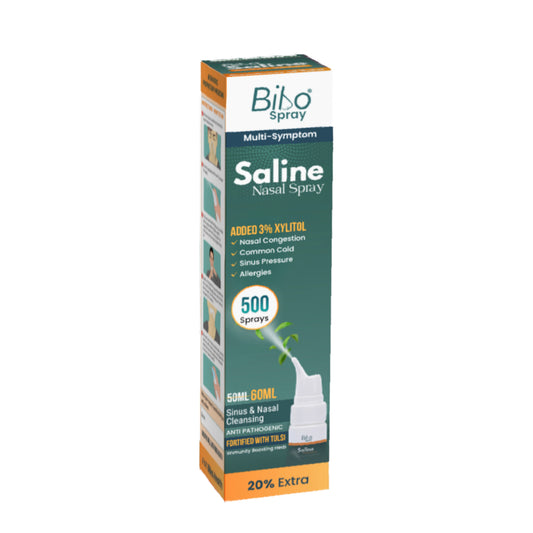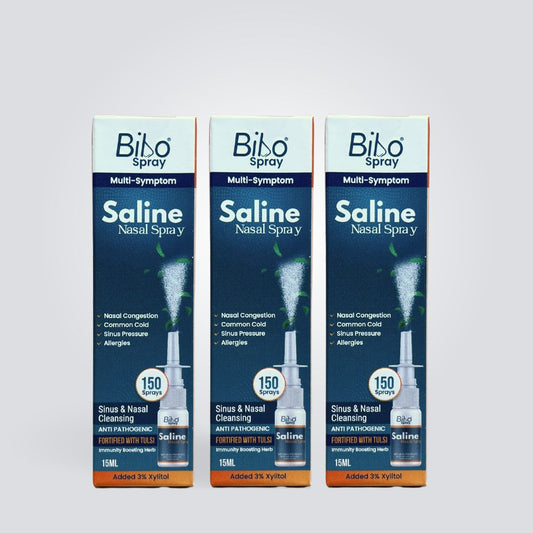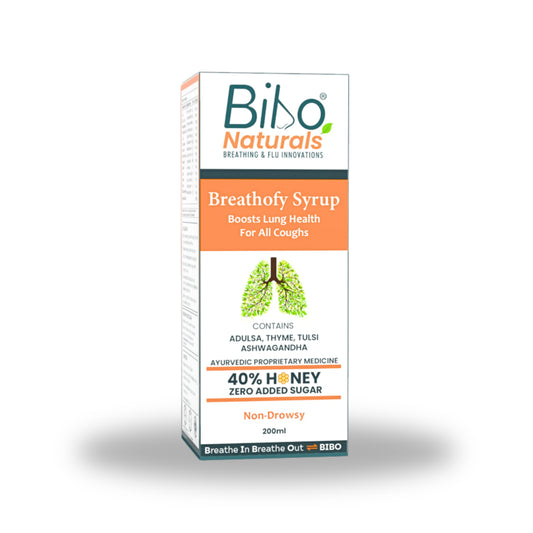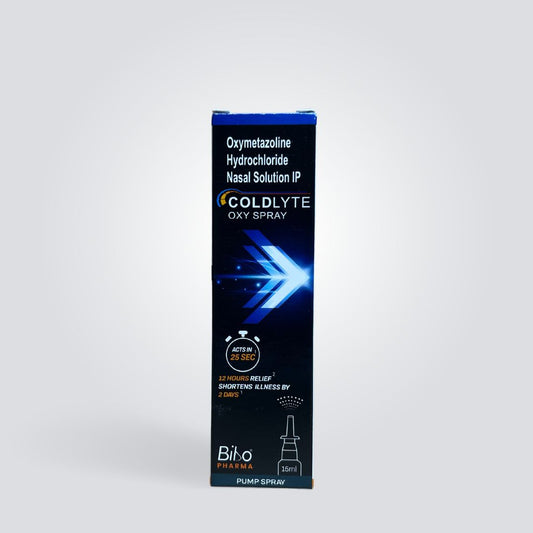
Do you know? According to an estimation, 13.4 crores of Indians suffer from chronic sinusitis. Yet the acute cases are not included in these figures. You can estimate the spread of the disease from the fact that suffered population is more than the total population in Japan.
What are sinuses?
Our skull generally contains paired cavities (hollow spaces) behind the forehead, eyes, cheeks, and nasal bones called paranasal sinuses. These sinuses are connected by narrow channels. They are lined by a thin layer of mucosa that produces thin mucus, which is drained from the narrow channels.
Types of sinuses

Our skull contains four pairs of sinuses-
- The frontal sinuses are located in the lower part of the centre of the forehead.
- The ethmoid sinuses are located between the eyes.
- The sphenoid sinuses are located in the bones behind the nose.
- The Maxillary sinuses (the largest cavity and most commonly infected) are located behind the cheekbones.
What is sinusitis or a sinus infection?
Sinusitis is defined as the inflammation and swelling of the lining of the paranasal sinuses. When these sinuses are inflamed, the pathway that drains the sinuses gets blocked or obstructed. Hence, the sinuses get filled with excess mucus or fluid. This may increase the chances of viral or bacterial infection.
Types of sinusitis
Based on severity:
There are three types of sinusitis.
- Acute sinusitis- a person may experience the symptoms for 4 weeks or less.
- Chronic sinusitis- in chronic sinusitis, a person may experience the symptoms for more than 3 months.
- Sub-acute sinusitis- a person experiences symptoms for more than a month and less than 3 months.
Based on causative organism:
- Viral sinusitis
- Bacterial sinusitis
Causes of sinusitis
Sinusitis could be due to due to various reasons. The most common ones include-
- Common cold
- Nasal polyps
- Deviated nasal septum
- Some medical conditions
- Respiratory tract infections
- Allergies such as hay fever
- Weak immune system
However, other factors may increase the risk of sinusitis. Some of which include-
- Low levels of antioxidants: vitamin A and E
- Vitamin D deficiency
- Smoking
Who is vulnerable to Sinusitis?
Everybody is at risk of getting sinus infections. But some conditions facilitate the growth of germs and increase the chances of developing infections. These include:
- Deviated nasal septum: a nasal septum is present in the nasal cavity, which divides the cavity into two nostrils. The septum is made up of bone and cartilage. When the septum deviate and bends to one side, it divides the nasal cavity unequally, which may make it difficult for the sinuses to clear the excess mucus.
- Nasal polyps (growth of tissues in the nose)
- Recent inhalation of spore or fungal infections
- Smoking
- Cold
- Weak immune system
- Infections of the larynx, bronchi, trachea, or pharynx may spread to the sinuses causing sinusitis
- Excessive mucus secretion in the lungs causes its deposition. This condition is known as cystic fibrosis. It causes the spread of infection in the sinuses and leads to sinusitis.
Symptoms of sinusitis

A common cold may have similar symptoms to sinusitis.
You may have a sinus infection or sinusitis if you feel pressure in the face, nose and eyes. People with sinusitis usually have the following symptoms-
- Nasal discharge
- Pain and pressure in the face, behind the eyes, cheeks, forehead, jaw or teeth.
- Nasal blockage, sneezing, fever
- Throat irritation
- Nasal congestion
- Swelling of the face
- Loss of smell
- Headache
However, a person with sinusitis may also show additional symptoms along with the ones mentioned above.
Diagnosis

Your physician may ask you a few questions based on your symptoms to diagnose your condition with a physical examination.
Your physician may also ask for some diagnostic tests to confirm sinusitis. Some of the most common tests include-
Nasal endoscopy- is a procedure in which an endoscope (a narrow, flexible tube with a tiny camera and light) will be introduced into the nasal cavity to examine the nasal and sinus area.
CT scan- images obtained from CT scans will help give details of the nasal and sinus areas. It will also help detect a deep inflammation or blockage in the sinuses due to nasal polyps or infection.
An allergy test- is a simple test done to find if you are allergic to something or if the allergens are causing the irritation or inflammation of your sinuses.
Treatment options for sinusitis
Nasal sprays are most preferred for sinusitis. They help to deliver medicines directly into the nose for quick action.
Saline nasal spray: They are the safest nasal sprays available. They help to thin the mucus in the nose and sinuses. It also helps to keep the nasal and sinus passages moist.
Nasal corticosteroids are used in spray forms. They work as anti-inflammatory agents and reduce the risk of sinusitis. Corticosteroids include budesonide, beclomethasone, fluticasone, and mometasone.
Decongestants: Generally, decongestants are used as nasal sprays to open the blocked nose. It shows quick action and reduces inflammation and congestion in sinusitis. The most commonly used decongestants include oxymetazoline, xylometazoline, and phenylephrine.
Anti-allergics: These medicines help to reduce the histamine levels (chemicals that are released during an allergic reaction) in the body, thereby reducing inflammation in the sinuses. Commonly used anti-allergics are Azelastine, levocetirizine, fexofenadine, etc.
Analgesics (pain relievers): These medicines reduce the pain and pressure in the sinuses. Analgesics include paracetamol, ibuprofen, etc.
Natural remedies for sinusitis

Many home remedies are effective in managing the symptoms of sinusitis. Following them along with regular medicines may show better results in reducing sinusitis symptoms. The most commonly used home remedies include-
-
Copious amount of water
Drink as much fluid as you can. Liquids are absorbed in the thick mucus and ensure hydration. The resulting diluted mucus is drained smoothly preventing sinus pressure. Dry air creates problems such as sore throat and stuffy nose. For this, you can add the liquid to the environment through a humidifier. Thus, you require a large amount of fluid in the body and also outside the body for the potent relief of nasal sinuses.
-
Saline nasal spray
It helps to flush out the dust, allergens, excess mucus and microbes from the nasal passages responsible for the inflammation.
-
Neti kriya or saline nasal irrigation
It is an initiative and effective method to clear the sinuses from excess mucus, dust particles and various microbes. It provides relief from various symptoms associated with sinusitis and decreases the severity of sinusitis.
Nasal irrigation simply means flushing the sinuses with boiled water, sterilized water, or saline solutions. It is a formula that rinses the nasal passages to loosen the mucus. The procedure for the making of saline solution is
- You just have to take one teaspoon of either sea salt or pickling salt and mix it with distilled water
- Also, add some baking soda to the solution
- After the preparation uses the solution through the bulb syringes or neti pot.
-
Improve your immunity by performing general exercises and breathing techniques.
- Eat healthy foods.
-
Include vitamin C-rich foods to improve your immunity.
- Foods rich in magnesium may help to reduce inflammation and help open up the airways for easy breathing. Foods rich in magnesium include pumpkin seeds, spinach, cashews, cereals, milk, dark chocolate, almonds, raisins, avocado, whole wheat, salmon, soymilk, peanut butter, brown rice, potato, yoghurt and banana.
- Include ginger and tulsi in your regular tea as they are proven to show antibacterial, antiviral and anti-inflammatory actions.
- Taking a hot shower or drinking hot water or drinks may help loosen the thick mucus and reduce inflammation.
- Use a humidifier to help reduce the swelling and ease breathing.
- Steam inhalation
For immediate treatment of nasal congestion, steam is a very powerful self-care. It also works through the loosening of mucus. We can also add peppermint oil, camphor or eucalyptus oil to fasten the effect of steam. Peppermint oil contains menthol that stimulates the passage of air and creates the sensation of easy breathing.
- Chicken soup
For centuries our ancestors have been using chicken soup as a weapon to treat diseases. It gives a variety of benefits. The steam emerging from the soup thins the mucus and helps in the drainage.
It helps in the relaxation of smooth muscles of the throat thus relieves from sore throat. It helps in the proper function of cilia. The cilia are the hairs in the nasal cavity that trap pollution and other waste particles. The liquid itself has anti-inflammatory and antioxidant effects.
- Hot and cold compresses
Leaning back with hot compresses over your nose helps in the warming of nasal passages. This remedy not only quickly relieves nasal pain but also nasal congestion. Here is how to follow the procedures.
- Place a hot cloth over the nose and eyes for three minutes. The absorbed heat will lose the mucus and kill the causing bacteria and viruses.
- Then cover across the sinuses with a cold towel for a half minute. The low temperature will help in the management of sinusitis pain.
- Alternate both steps 3-4 times a day.
Is sinusitis treatable?
Managing the root cause of sinusitis helps to manage the condition better. The most common cause of sinusitis is allergies. Avoiding exposure to allergens is one of the best ways to manage it.
If sinusitis is due to nasal polyps, and medicines are not effective then your doctor may recommend surgery where the polyps will be removed. Unfortunately, in some cases, these polyps may return even after removal. Hence it is always better to manage your condition to prevent recurrent sinus infections.
Complications of sinusitis
In some people, sinusitis may lead to lower respiratory tract infections (including bronchitis and pneumonia), affect vision, and may cause complete loss of smell, if left untreated.
In severe cases, it may cause meningitis (inflammation in the membranes covering the brain and spinal cord), brain abscess (accumulation of pus in the brain) or a bone infection.
Hence, it is always better to consult a doctor if you have sinusitis before it gets severe.
Some travelling precautions for people with sinusitis

Are you thinking that sinusitis is contagious? Are you avoiding going to school and other activities because of it? If you are doing this, then definitely you are doing wrong. The reason for this is that the sinus patient is unable to transfer the infection to others, such as family members and classmates. But if you are planning to travel a long distance, then you must take some preventive measures and precautions.
Do not fly if you can avoid it.When sinuses become inflamed, there are excessive mucus secretions that block the sinuses. Such sinuses become extremely sensitive to change in air pressure. When the altitude increases, the atmospheric pressure decreases, and air expands. Such change in atmospheric pressure produces barotrauma which spoils the infection and cause ear pain. So, if you can avoid the fly, do it.
Eat healthy food before leaving to the airport.
Our body needs healthy food for the proper development of the body's immune system. Choice of proper food which contains all nutrients essential for the health of sinuses will ensure healthy drive throughout the day. This use of antioxidants such as Ascorbic Acid and Vitamin E are additional tool to combat chronic sinusitis infection.
Get good sleep.Before the flight, you must be conscious of your sleep. A complete night’s rest before your traveling will boost up your stamina and give strength to your immune system to fight harmful pathogens. If you are suffering from motion sickness, then you must visit your health care provider for proper medication before the flight.
Stay hydrated.Drink as many fluids as you can during a sinus infection. Fluids help to thin the mucus secretions and prevent the lining of the nasal cavity and air sinuses from drying out. Thin mucus secretions are drained readily, and thus nasal congestion is avoided. You can drink fresh juices, herbal tea, coffee, and water.
Avoid alcohol.You can drink plenty of fluids but avoid the use of alcohol, cocktails, beer, and wine. Such beverages do not contain water and cause the mucous membrane to dehydrate. Also, alcohol causes swelling in sinuses resulting in the worsening of symptoms.
Use warm compresses.Moist heat, warm towels, and taking bath with hot water help to loosen the mucus. Attenuated mucus secretions play a key role to overcome deadly nasal congestion and maintain easy breathing. Heat also helps in killing of causing pathogens and relieves the symptoms quickly.
Use a humidifier.Dry air causes irritation in the upper respiratory tract due to which flu and cold-like symptoms appear. A humidifier is a device that is used to humidify the air. They are present in different sizes. They prevent dryness in the air and keep the atmosphere of the room moist.
Use of nasal wash (Nasal lavage)Nasal lavages are sterile solutions used for the cleaning of sinuses. They disinfect the sinuses from pathogens and help in the drainage of thick mucus secretions. Mostly the sterile solutions are saline solutions or boiled water that are packed in sterilized bottles.
Avoid smoking.If you are a smoker and want to protect your respiratory tract, then you are making a joke. For the improvement of your sinusitis, you must quit smoking immediately. Except to skip smoking you must keep yourself protected from passive smoking and polluted environment.
Effects of air pollution on sinusitis

Increase in air pollutants has disrupted the normal physiology and biochemistry of the whole respiratory system. Specialized chemicals in the environment lead to the destruction of mucous membrane and provoke inflammatory diseases. Rhinitis, sinusitis, asthma, and several other allergies are commonly triggered by air pollution.
When the pollutants of air deposit in the airways, they irritate the mucous membrane, and the inflammatory process starts. They may cause neurogenic inflammation by directly affecting the substances in the blood such as vasodilation, edema, and immigration of white blood cells. Pollutants alter the consistency of mucous membrane that results in increased penetration, decreased thickness, and ciliary damage. The major site of inflammation is sinuses that may lead to sinusitis.
Causing factors in children
When the infection of the upper respiratory tract such as the common cold lasts more than 10-14 days, symptoms of acute sinusitis may begin to appear. The secretions of previous diseases block the sinuses which make the environment favorable resulting in viral and bacterial growth. The increased microbial growth causes the symptoms of sinusitis.
Symptoms in children
For both the chronic and acute cases the symptoms are similar:
- Increase in temperature of the body up to 101’o
- Thick yellow or green secretions
- Blockage of nasal cavities, postnasal dripping
- Headache and pressure in sinuses, feeling heavy.
- Surroundings of the eye become swollen.
- The bad smell in-breath (halitosis)
- Loss of smell
- Coughing




